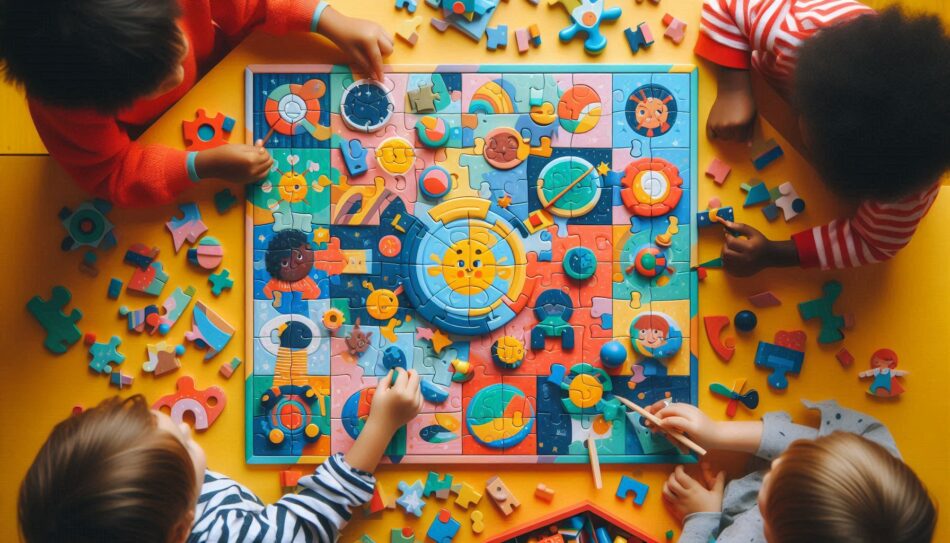In a world dominated by screens and digital entertainment, wood puzzle games offer a refreshing return to tactile, hands-on play. These beautifully crafted games combine the charm of natural materials with the mental challenge of solving intricate puzzles. From classic jigsaw puzzles to 3D brain teasers, wood puzzle games are beloved by kids, adults, and collectors alike. In this article, we’ll explore the history, benefits, and top picks of wood puzzle games, along with tips to choose the perfect one for your next family game night or solo challenge.
What Are Wood Puzzle Games?
Wood puzzle games are physical puzzles made from wood, designed to test logic, patience, and creativity. Unlike plastic or digital puzzles, wood puzzles emphasize craftsmanship, durability, and sensory engagement. Popular types include:
- Jigsaw Puzzles: Interlocking pieces that form images or patterns.
- 3D Puzzles: Assemble pieces into structures like buildings, animals, or geometric shapes.
- Brain Teasers: Solve mechanical challenges (e.g., disentangle rings, unlock boxes).
- Educational Puzzles: Alphabet, number, or map puzzles for kids.
These games are often handcrafted, making them eco-friendly heirlooms that can be passed down through generations.
Why Wood Puzzle Games Are Timeless
Wood puzzle games have endured for centuries—and for good reason:
- Eco-Friendly Appeal: Made from sustainable materials like bamboo or reclaimed wood.
- Durability: Unlike flimsy plastic, wood puzzles withstand years of use.
- Tactile Experience: The weight and texture of wood enhance focus and relaxation.
- Aesthetic Value: Intricate designs double as decorative pieces.
- Screen-Free Fun: Ideal for reducing screen time and fostering offline interaction.
From ancient Chinese tangram puzzles to modern artisan creations, wood puzzles remain a symbol of mindful play.
Benefits of Playing Wood Puzzle Games
Beyond entertainment, wood puzzle games offer cognitive, emotional, and social perks:
- Boosts Problem-Solving Skills: Analyzing shapes and patterns sharpens logical thinking.
- Enhances Memory: Recalling piece placements improves spatial awareness.
- Reduces Stress: The meditative process of assembling puzzles lowers anxiety.
- Encourages Patience: Mastering complex builds teaches perseverance.
- Family Bonding: Collaborative solving fosters teamwork and communication.
Studies show that puzzles can also delay cognitive decline in older adults, making wood puzzle games a tool for lifelong brain health.
Top Wood Puzzle Games to Try
Whether you’re a beginner or a seasoned puzzler, here are some standout wood puzzle games:
1. Ravensburger Wooden Jigsaw Puzzles
- Why It’s Great: Premium-quality puzzles with vibrant artwork.
- Difficulty: Ranges from 50 to 1,000 pieces.
- Standout Feature: Precision-cut pieces for a seamless fit.
2. Unidragon 3D Animal Puzzles
- Why It’s Great: Laser-cut wooden animal shapes (e.g., elephants, dragons).
- Difficulty: Moderate; ideal for teens and adults.
- Standout Feature: Eco-friendly stained wood with no glue required.
3. Melissa & Doug Wooden Brain Teasers
- Why It’s Great: Educational puzzles for kids (e.g., alphabet boards, pattern blocks).
- Difficulty: Simple to intermediate.
- Standout Feature: Bright colors and chunky pieces for small hands.
4. Hanayama Metal & Wood Fusion Puzzles
- Why It’s Great: Combines wood and metal for challenging disentanglement games.
- Difficulty: Advanced; perfect for puzzle enthusiasts.
- Standout Feature: Sleek, modern design.
5. Artifact Puzzles
- Why It’s Great: Hand-cut, thematic puzzles (e.g., nature scenes, vintage maps).
- Difficulty: Varied; collectible art-grade quality.
- Standout Feature: Unique “whimsy” pieces shaped like objects (e.g., birds, trees).
How to Choose the Right Wood Puzzle Game
With countless options available, consider these factors when selecting a wood puzzle game:
- Age & Skill Level: Opt for larger pieces for kids and intricate designs for adults.
- Interests: Choose themes like animals, landscapes, or abstract art.
- Difficulty: Start with fewer pieces and progress to complex 3D builds.
- Quality: Look for smooth edges, non-toxic finishes, and sturdy construction.
- Purpose: Educational, decorative, or a challenging hobby?
The Educational Value of Wood Puzzle Games
Wood puzzle games are a staple in Montessori and homeschooling curricula because they:
- Teach geometry, symmetry, and spatial reasoning.
- Improve fine motor skills in young children.
- Introduce historical or cultural themes (e.g., world map puzzles).
- Encourage independent problem-solving.
Parents and educators can use these puzzles to make learning interactive and engaging.
The Future of Wood Puzzle Games
As sustainability gains importance, wood puzzle games are evolving with trends like:
- Eco-Conscious Materials: Puzzles made from bamboo, cork, or recycled wood.
- Tech Integration: AR-enabled puzzles that blend physical and digital play.
- Custom Designs: Personalized puzzles featuring family photos or logos.
- Collaborative Kits: Multi-generational sets with varying difficulty levels.
These innovations ensure wood puzzle games remain relevant in a tech-driven world.
Why Wood Puzzle Games Are a Must-Have
Wood puzzle games are more than toys—they’re investments in creativity, education, and quality time. They’re perfect for:
- Family game nights.
- Classroom activities.
- Stress relief after a long day.
- Unique gifts for puzzle lovers.
Conclusion
Wood puzzle games bridge the gap between tradition and modern play, offering timeless challenges that delight all ages. Whether you’re piecing together a serene landscape or tackling a brain-bending 3D structure, these puzzles provide a satisfying escape from digital overload. So, unplug, gather your loved ones, and rediscover the joy of wood puzzle games—one piece at a time!
M
 WhatsApp Us Now
WhatsApp Us Now








